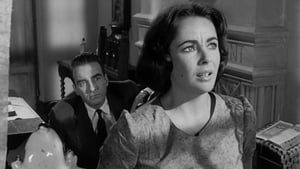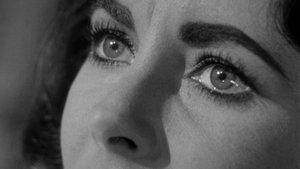Video Sources 0 Views

Synopsis

Delve into the sultry and psychologically charged world of Tennessee Williams with Suddenly Last Summer, a provocative Southern Gothic drama from 1959, now exquisitely colorized for a visually arresting experience. Starring Elizabeth Taylor and Montgomery Clift, and directed by Joseph L. Mankiewicz, this film explores themes of madness, repressed desire, and societal decay with unflinching intensity. Perfect for fans of classic drama, scandalous stories, and the works of Tennessee Williams, this HD download brings a controversial and unforgettable piece of cinematic history to your screen. The movie was based on the play of the same name and it was also known as Tennessee Williams’ Suddenly Last Summer.
Suddenly Last Summer unfolds in the opulent and decaying Garden District of New Orleans. The story centers on Violet Venable (Katharine Hepburn), a wealthy and eccentric widow haunted by the death of her son, Sebastian, the previous summer. Determined to preserve his memory as she sees it, Violet summons Dr. Cukrowicz (Montgomery Clift), a brilliant neurosurgeon specializing in lobotomies, to treat her niece, Catharine Holly (Elizabeth Taylor).
Catharine has been traumatized by the events she witnessed while traveling with Sebastian and is now plagued by disturbing memories and accusations. Violet insists that Dr. Cukrowicz perform a lobotomy on Catharine to silence her, fearing that the truth she holds will tarnish Sebastian’s legacy. As Dr. Cukrowicz delves deeper into Catharine’s fractured psyche, he uncovers a shocking tale of exploitation, hidden desires, and a horrifying secret that could destroy the Venable family forever. Suddenly Last Summer is a dark and atmospheric exploration of the human psyche, filled with suspense, shocking revelations, and unforgettable performances.
The film boasts a powerhouse cast of legendary actors who bring these complex characters to life:
-
Elizabeth Taylor as Catharine Holly
-
Montgomery Clift as Dr. John Cukrowicz
-
Katharine Hepburn as Violet Venable
-
Albert Dekker as Dr. Hockstader
-
Mercedes McCambridge as Mrs. Holly
Suddenly Last Summer defies easy categorization, blending elements of Southern Gothic, psychological thriller, and scandalous drama. Its exploration of taboo subjects and its atmospheric setting create a unique and unforgettable cinematic experience.
Released in 1959, Suddenly Last Summer reflects the changing attitudes towards censorship and the increasing willingness of filmmakers to tackle controversial topics. The film was adapted from a one-act play by Tennessee Williams, one of America’s most celebrated playwrights, known for his unflinching portrayals of human desire, psychological turmoil, and societal hypocrisy. While the film faced some controversy upon its release due to its themes of homosexuality and cannibalism, it has since become recognized as a landmark work of American cinema, pushing boundaries and challenging audience expectations.
This colorized version of Suddenly Last Summer has been meticulously restored using modern digital techniques, enhancing the visual impact of the film while preserving its original atmosphere of suspense and psychological tension. The colorization process involved carefully analyzing the grayscale tones of the original black and white footage and assigning appropriate colors to each scene, enhancing the lushness of the New Orleans setting and highlighting the emotional intensity of the performances. While the specific software used remains proprietary, the techniques employed included advanced algorithms for color palette selection and image enhancement. This painstaking process brings new life to the characters and settings, making the story even more engaging for modern audiences. While some may debate the merits of colorizing classic films, it introduces these films to a broader audience, ensuring their legacy for future generations.
-
: Joseph L. Mankiewicz
-
: Gore Vidal, Tennessee Williams
-
: the play by Tennessee Williams
-
: Jack Hildyard
-
: William Hornbeck and Ralph E. Winters
-
: Horizon Pictures
-
: Columbia Pictures
-
: 114 minutes
-
: MP4
-
: HD (1080p)
-
: Compatible with most devices, including smartphones, tablets, computers, and smart TVs.
Suddenly Last Summer (1959) is considered a daring and provocative film for its time, tackling taboo subjects with unflinching honesty. While it initially polarized critics, it has since gained recognition as a landmark work of American cinema, showcasing the power of Tennessee Williams’ storytelling and the brilliance of its cast.
-
: What is Suddenly Last Summer about?
-
A: Suddenly Last Summer is a Southern Gothic drama about a wealthy widow who wants to silence her niece to protect her dead son’s reputation.
-
-
: Is Suddenly Last Summer (1959) a controversial film?
-
A: Yes, Suddenly Last Summer was controversial for its themes of homosexuality, mental illness, and cannibalism.
-
-
: Is this version of Suddenly Last Summer colorized?
-
A: Yes, this version has been professionally colorized to enhance the viewing experience.
-
-
: What makes Suddenly Last Summer interesting for classic film fans?
-
A: Suddenly Last Summer offers a glimpse into the changing attitudes towards censorship in the 1950s and features unforgettable performances by Elizabeth Taylor, Montgomery Clift, and Katharine Hepburn.
-
-
: What is the download format?
-
A: The download format is MP4, which is compatible with most devices.
-
-
: What resolution is the download?
-
A: The resolution is HD (1080p), providing a high-quality viewing experience.
-
Watch Suddenly Last Summer Today!




















